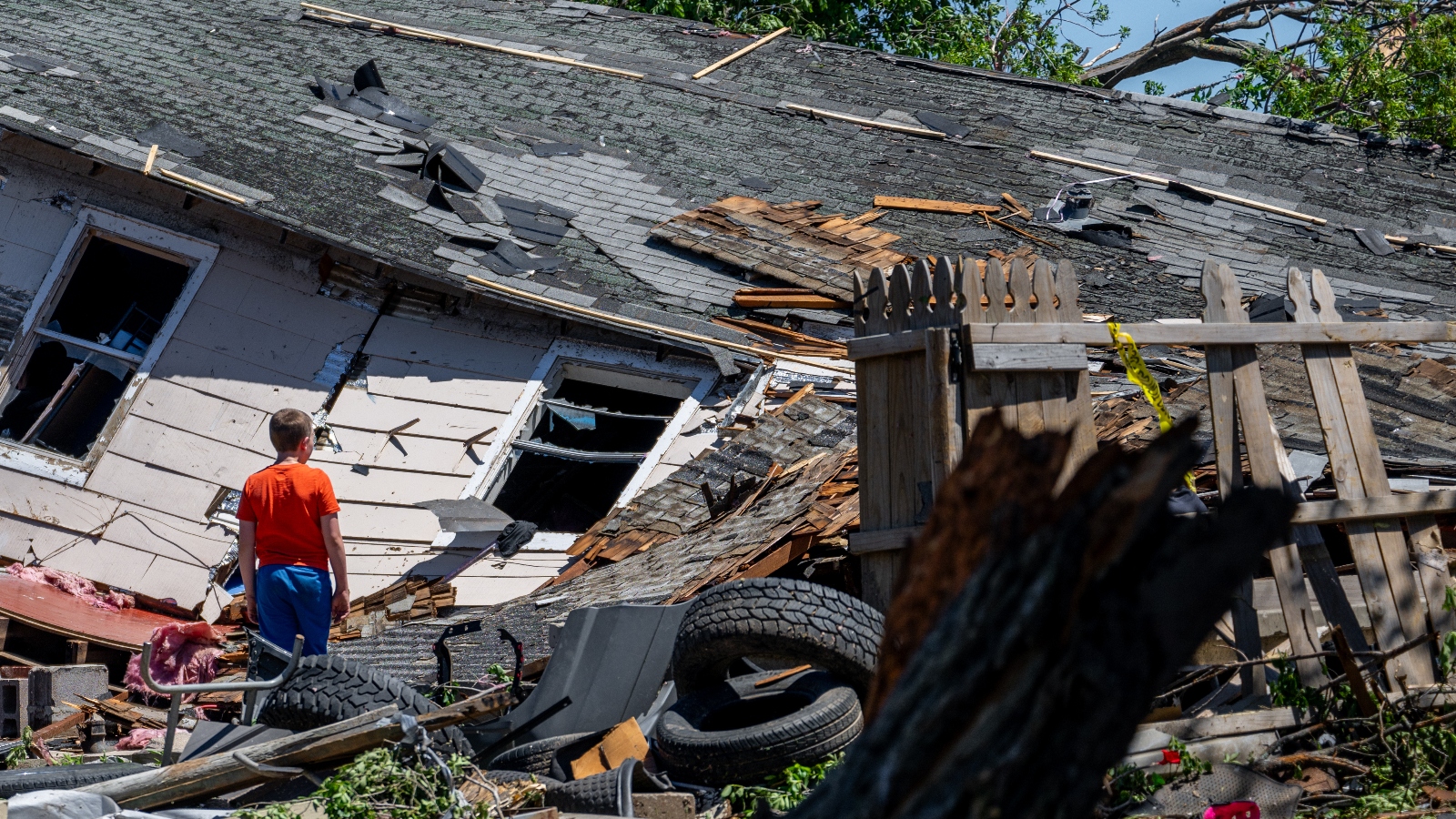Elizabeth Mitchell received a notice from her commercial property insurance company in April that set off alarm bells.
Acadia Insurance, the insurer for the market, workspace, and wellness-center nonprofit she runs in West Cornwall, Connecticut, would no longer cover “bodily injury, property damage, or personal and advertising injury” from “contact with, exposure to, existence of, or presence of any ‘PFAS.’”
PFAS, as Mitchell soon discovered, is short for per- and polyfluoroalkyl substances, which appear in everything from clothing to cleaning products to cookware and are linked to a wide range of health risks. Since most of these toxic substances don’t break down and are now found in the blood of people all over the world, they’ve earned the nickname “forever chemicals.”
An increasing number of Connecticut towns have found forever chemicals in their water supplies, and for decades, the river that runs through Mitchell’s community has been contaminated by hazardous waste, leading to hundreds of millions of dollars in settlements. Now, if forever chemicals were found in the local water supply and someone sued Mitchell’s nonprofit for exposure, the operation would be at risk of bankruptcy.
“Places like us, you can’t get sued,” said Mitchell. “We definitely could not sustain a lawsuit.”
Mitchell, who is my mother, is one of thousands of business owners who could be getting notices that their insurers will no longer cover PFAS risks.
As concerns about the dangers of forever chemicals rise nationwide and lawyers warn of a deluge of “astronomical” lawsuits, commercial insurers are quietly eliminating liability coverage for these chemicals’ health and ecological consequences. Such coverage exclusions can leave small businesses on the line for costly litigation and victims without recourse for their medical costs from life-threatening PFAS exposure.
This trend “is definitely well underway,” said John Ellison, an attorney who works on behalf of insurance policyholders at the global law firm Reed Smith. “Certainly large portions of the insurance industry have decided that they’re not interested in selling liability insurance coverage for PFAS.”
Acadia Insurance declined to comment.
Companies are so worried about the cost of future PFAS litigation that they have labeled these chemicals the “new asbestos,” in reference to the once-ubiquitous building product whose links to cancer have led insurers to pay out nearly $100 billion in claims and sent dozens of firms into bankruptcy.
According to The New York Times, a defense lawyer recently warned at an industry conference that PFAS lawsuits could “dwarf anything related to asbestos” and that plastic-industry executives should “do what you can, while you can” to prepare for the onslaught of lawsuits “before you get sued.”
The elimination of PFAS insurance coverage is happening amid a nationwide crackdown on the chemicals. The Environmental Protection Agency just designated two widely used forever chemicals as “hazardous substances” and set the first-ever limits on these chemicals in drinking water. At least six states including Colorado, Kentucky, and Maine have enacted bills related to PFAS regulation this year.
Yet insurers’ fears about not being able to afford PFAS lawsuits may be misplaced, said Joanne Doroshow, executive director of New York Law School’s Center for Justice & Democracy. The industry had stored away more than one trillion dollars in surplus profits by the end of 2021 — an all-time high.
“We have insurance in order to protect us and we pay a lot of premiums to these companies with the expectation that when there is a claim they’ll pay it — and they don’t want to pay it,” Doroshow said.
Dumping risk
First discovered in the late 1930s, forever chemicals have been commonly used across a wide range of consumer products since the mid-20th century. Not long after, major PFAS manufacturers like 3M and DuPont began conducting animal studies that uncovered disturbing findings, such as that a low daily dose of these chemicals could kill a monkey within weeks.
Yet the multinational conglomerates followed in the footsteps of Big Tobacco and hid the dangers of PFAS from the general public for more than 40 years. This included suppressing their own research and spending large sums to quietly settle lawsuits and fight federal regulations. A 2015 report by the Centers for Disease Control and Prevention discovered that PFAS can be found in the blood of 97 percent of Americans.
In 1999, a West Virginian farmer filed a lawsuit against DuPont for contaminating his water with forever chemicals that allegedly killed his cattle. Since then, law firms have filed 9,800 suits alleging that forever-chemical exposure has led to cancer, heart damage, and other harms, resulting in almost $17 billion in settlements across 140 industries, according to a 2023 report by the Seattle-based consulting firm Milliman.
This March, a court approved a multibillion-dollar settlement from the multinational conglomerate 3M after the manufacturer was accused of contaminating public drinking water systems nationwide with forever chemicals that it had long been producing.
Now, insurers are working to limit their risk by dropping their PFAS coverage.
“Insurers, mindful of the high cost of defending and indemnifying their insured businesses’ PFAS risks, have begun modifying or reinterpreting business insurance policy provisions to mitigate their own coverage burden,” wrote attorneys from Minnesota-based Nilan Johnson Lewis, a law firm that represents businesses across a wide range of industries, in an online report.
Last year, the Insurance Services Office, a property and casualty insurance advisory organization that develops and publishes policy language for insurers, endorsed the exclusion of PFAS coverage. The organization’s endorsement provided language for insurers to “broadly exclude bodily injury, property damage and personal and advertising injury related exposures associated with PFAS” from business owners’ general liability insurance policies.
“Every sophisticated insurance company worth their salt would have [PFAS] on their radar as a potential concern,” said Chip Merlin, founder of Merlin Law Group, a litigation firm that advocates for the rights of policyholders. “They learned these lessons through things like asbestos.”
Over the years, hundreds of thousands of people across the United States have filed compensation claims for asbestos-related injuries, with the average settlement ranging from $1 to $2 million. In 2019, insurers saw $92 billion in losses from asbestos liabilities.
Erik Olson, a senior strategic director at the environmental advocacy group Natural Resources Defense Council, said PFAS lawsuits are more likely to target big businesses like DuPont or 3M, rather than neighborhood nonprofits.
So far, “the folks getting sued are those that have deep pockets, where [victims] can get substantial payouts,” said Olson.
But this does not mean small businesses are immune from future claims, said Ellison, the Reed Smith attorney. Ellison has represented larger businesses experiencing PFAS-related lawsuits, but suspects smaller businesses will experience similar litigation down the line.
“Any small business that is in the stream of commerce that PFAS is a part of, they are all subject to being sued,” he said. “Those companies have a big fight on their hands about whether they have insurance to defend those claims. It’s naive to say they’re not at risk.”
Labeling PFAS a pollutant
Along with stripping PFAS coverage from their plans moving forward, insurance companies are using long-standing pollution exclusions to avoid PFAS lawsuit payouts in other instances where business insurance policies did not explicitly bar PFAS liability coverage.
Pollution exclusions emerged in the early 1970s as a way for insurers to avoid big payouts following the creation of the Environmental Protection Agency and demands for companies to curtail and clean up pollution activities. Such exclusions have since become common in business insurance policies.
Now these exclusions are paying legal dividends for insurers aiming to avoid PFAS liabilities.
In 2022, a U.S. district court judge ruled that an insurer’s “total pollution exclusion” meant it did not have to cover a Dalton, Georgia, recycling facility after town residents alleged they were injured by PFAS chemicals the plant discharged into local waterways.
In a New York case that same year, an appellate court judge likewise ruled that insurers’ pollution exclusions meant they didn’t have to cover the maker of nonstick, heat-resistant materials in lawsuits claiming the manufacturer polluted groundwater with PFAS chemicals. The firm that represented the insurers called the ruling a “significant win for the insurance industry” and their client, who “was facing potentially enormous” expenses.
Some of these pollution exclusions also bar coverage for the testing and removal of pollutants from the environment, which could potentially be used to avoid payouts for PFAS cleanup efforts. Removing PFAS from the environment is incredibly costly: One study in Minnesota found that removing forever chemicals from wastewater streams in the state would cost between $14 and $28 billion over 20 years. The American Water Works Association estimates PFAS cleanup in drinking water nationally would amount to between $3.2 and $5.7 billion annually.
With this in mind, avoiding PFAS lawsuit payouts is par for the course for insurers, said Doroshow. “It’s about dumping risk,” she said. “That seems to be the business model of insurance companies.”
Yet Doroshow questions if PFAS pose a dire risk to insurers’ profits.
In the decade leading up to 2020, industry data showed that total commercial insurance payouts “had not spiked and generally tracked the rate of inflation and growth of population,” according to research by Doroshow and her colleagues. Meanwhile, insurers like Travelers — a major player in property and casualty insurance — hit their largest-ever profits this January, while premiums for policyholders soared.
Regardless, noted Doroshow and her collaborators, industry leaders “publicly spin the notion that the industry is financially beleaguered and cannot pay claims without significantly raising rates.”
While collusion to raise prices is illegal in many businesses, certain activities by insurers are exempt from federal antitrust laws, allowing them to share information about past losses and make future coverage and premium decisions accordingly.
“It’s really a function of a completely unregulated industry,” said Dorowshow. “They don’t have any federal regulation.”
The state of affairs is concerning for small business managers like Mitchell, who are now getting PFAS exclusion notices from their insurers.
“I’m the steward of this nonprofit and then the insurer sends me this letter, so what am I really covered for?” said Mitchell. “I like to believe that nobody would ever come in and sue, but I never know.”
This story was originally published by Grist with the headline Forever chemicals are poisoning your insurance on Jun 19, 2024.













